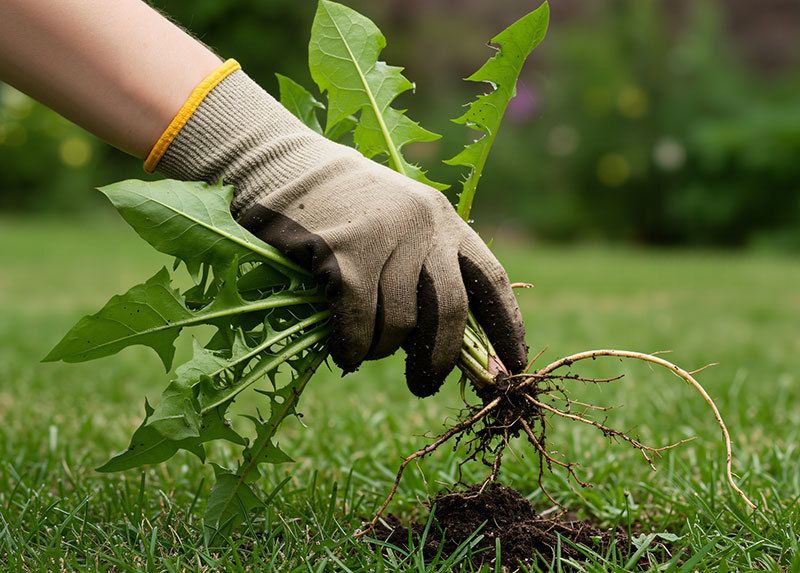|
Brown patches, stubborn weeds, and thinning grass can dash your hopes for a dream lawn. But don’t worry, most lawn issues have a simple fix once you figure out what you are dealing with.
Many people take pride in a healthy, green yard where kids and pets can play, but lawns are not always easy to maintain. Whether it’s patchy spots, weeds, or yellowing grass, problems can sneak up fast and only get worse if left untreated. The good news is that most issues are manageable with the right approach. Here’s a look at some common lawn care problems and practical solutions to help you get your yard back on track.
Problem: Patchy or Bare Spots
Uneven growth or bald patches on a lawn have many potential culprits, including foot traffic, pet urine, or compacted soil.
Solution: Identify and Repair
First, identify the cause. For instance, if it’s due to pets, try training them to use a designated spot. If it’s heavy foot traffic, consider adding a stepping stone path to reduce wear. To repair the patches, rake out dead grass, loosen the soil, and reseed with a grass variety that matches the rest of your lawn.
Problem: Lawn Pests
Dead patches on your lawn can also be caused by pests like grubs, chinch bugs, and armyworms.
Solution: Inspect and Eliminate
If you suspect pests, lift a section of turf and look for white, C-shaped grubs or other bugs near the soil surface. For small infestations, beneficial nematodes or neem oil can work. For larger problems, you might need a targeted insecticide. Healthy lawns are less prone to pest issues, so keep up with routine care.

Problem: Weed Takeover
Weeds like dandelions and crabgrass can quickly crowd out your lawn’s healthy grass.
Solution: Prevention is Key
A thick and healthy lawn will naturally choke out weeds, so keep your grass healthy with regular mowing, fertilizing, and watering. In the spring, you can also stop weed growth in its tracks by applying a pre-emergent herbicide that will prevent the seeds from sprouting.
However, if the weeds are already present, you will have to spot-treat them with a selective post-emergent herbicide. If you’re not a fan of using chemicals on your lawn, then you can remove them, root and all, with a weeding tool.
Problem: Yellow or Discolored Grass
If your grass is turning yellow or brown, it could be due to overwatering, underwatering, fungal disease, or even a nutrient deficiency.
Solution: Optimize Your Watering or Fertilizing
A good rule of thumb for a lawn is to water deeply but infrequently, about 1 inch per week. Avoid watering in the evening, as this can encourage fungus to grow. Alternatively, if a soil test for nutrient levels reveals a nitrogen deficiency, then a balanced slow-release fertilizer can help.
Problem: Compacted Soil
Over time, foot traffic over your lawn can compact the soil, preventing water and nutrients from reaching roots and causing bare spots.
Solution: Aerating
If parts of your lawn feel hard or you notice water pooling when it rains, you may need to aerate. An aerator pulls small plugs from the lawn, loosening the soil and improving oxygen flow. It is most beneficial in the spring or fall when the grass is actively growing.
Lawn care doesn’t have to be complicated; it just requires consistency and observation. By catching problems early and taking targeted action, you can keep your lawn in great shape.
|